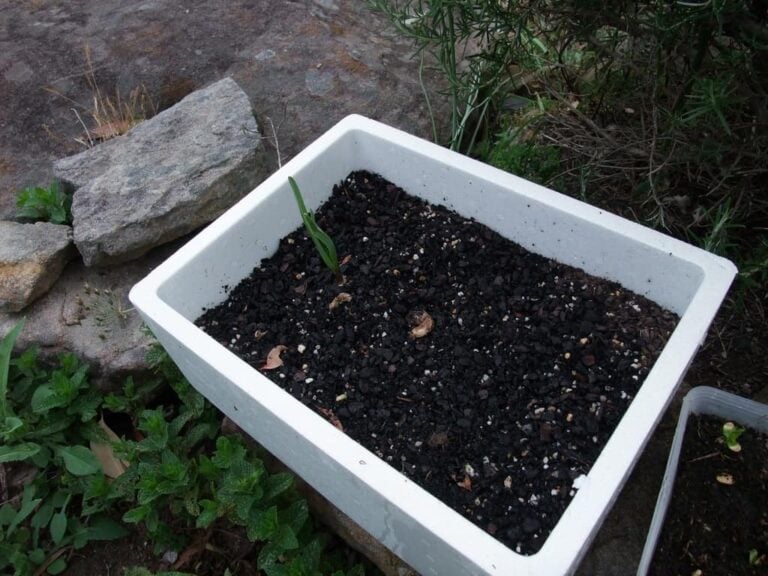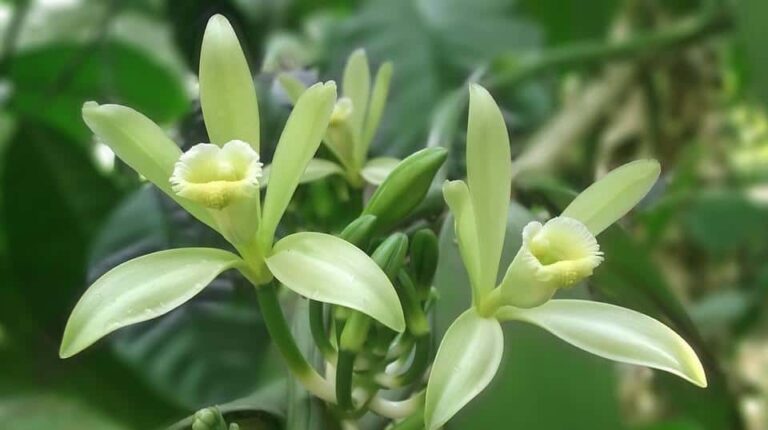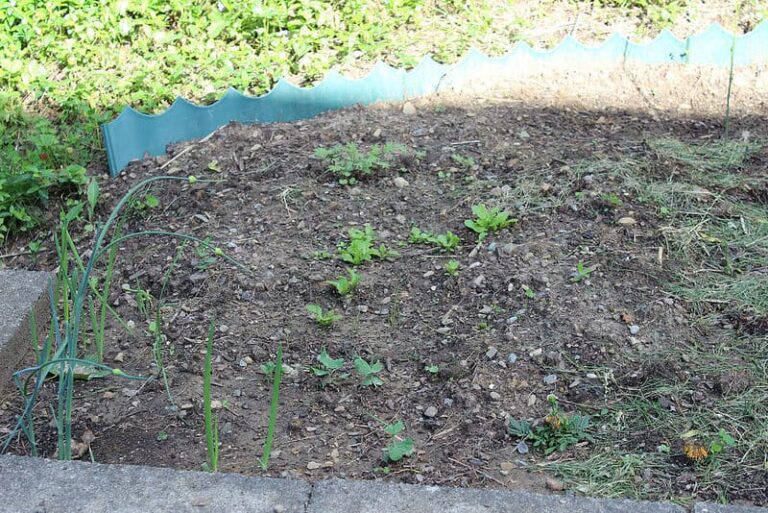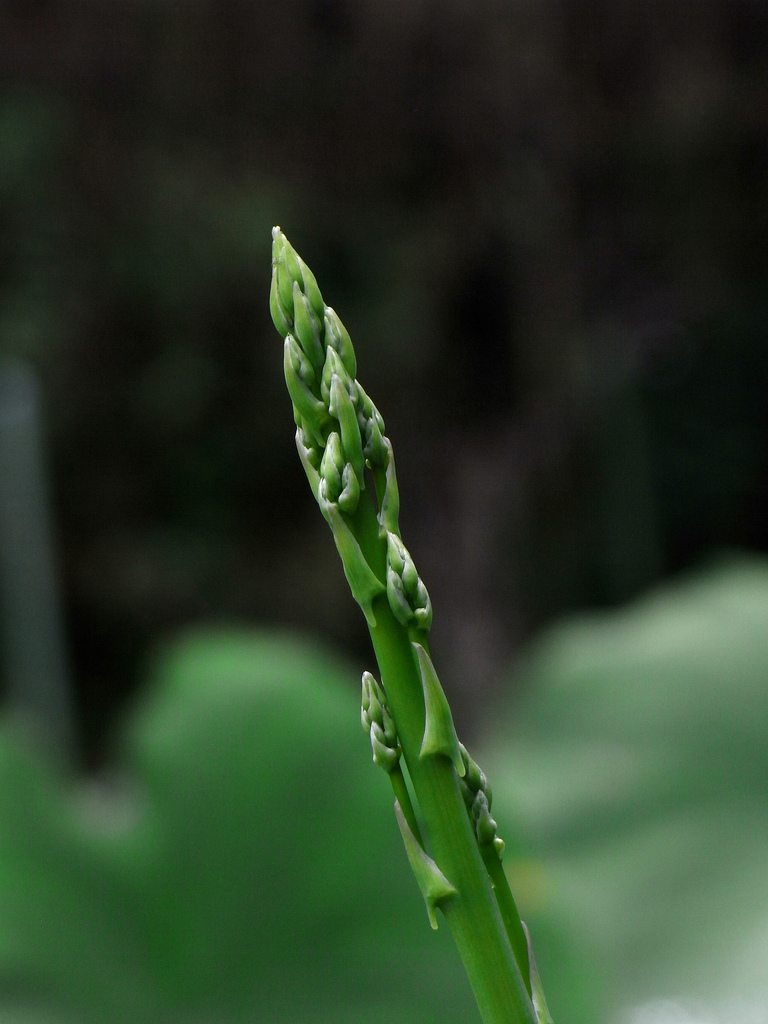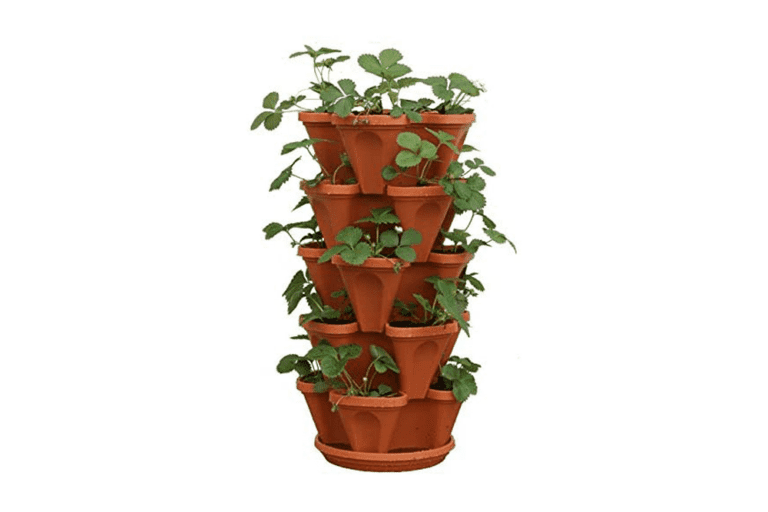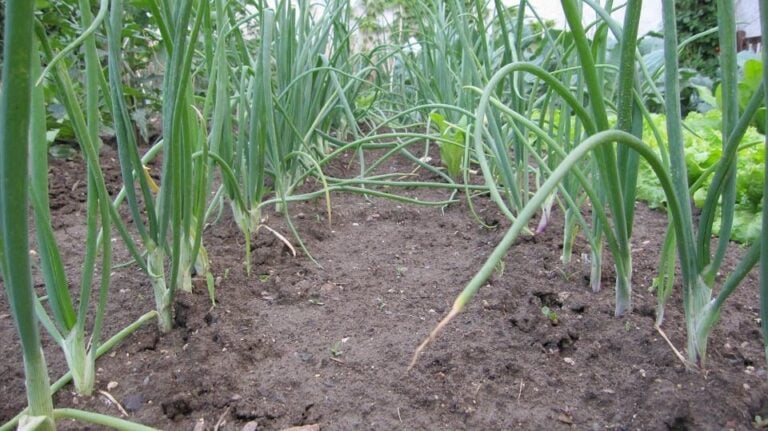Why Hydrangea Leaves Turn Yellow + How to Fix Them
Hydrangea leaves are a lush green when they are healthy and the flowers can be extremely colorful and pleasing to the eye.
A popular plant to grow in your garden or a pot on your patio, it can be concerning when the leaves begin to turn yellow.
It messes up the beauty and aesthetic of the plant and they may completely lose their gorgeous color. You might wonder what is causing this and if you can fix it.
Luckily, we have written this article to tell you a little bit more about the plant and why they turn yellow.
We have also gone through our advice on how to fix the yellow leaves and keep your plant growing and healthy. Let’s jump right in.
Why do Hydrangea’s Turn Yellow?
Hydrangeas can withstand cold winter temperatures and are a great plant to add to your home wherever you might live. However, there are several reasons why after you have purchased one, the leaves turn yellow.
These range from overwatering, to receiving too much sunlight to a nutrient deficiency. Let’s take a look at these issues in further detail.
Fungal Disease
Fungal infections on houseplants such as hydrangeas show signs on the roots and you can also notice effects on the leaves. Root rot, for example, means the plant is unable to feed properly and the signs start to show on both the leaves and roots.
Drooping leaves that are also turning yellow could therefore be a sign of root rot or fungal disease and if this is not taken care of, the plant could die.
A fungal disease that is popular in hydrangeas is leaf spot and this can be spotted by yellow leaves and brown or purple spots in the leaves and underside.
Overwatering your Hydrangea’s
If you are overwatering your plant, this could be why its leaves are turning yellow. Overwatering is a common cause of leaves turning yellow in hydrangea plants as the plant likes well-draining soil that is kept moist.
However, if the pot is not able to drain properly, the leaves might begin to turn yellow and another way you will know it is because of overwatering is because they might also start to droop.
Too much water can cause the plant to appear soggy and become drenched in the root area. When this happens, the plant will not be able to breathe and this can lead to stunted growth, discoloration of leaves, and root rot fungal disease.
Although hydrangeas like to absorb water, they will struggle to grow and they will not thrive in wetlands. The roots will begin to rot as a result of constant wetness and shortly after, you will notice the leaves have begun to turn yellow too.
If you do not care for your plant properly and allow it to sit in wet conditions, your plant might completely die.
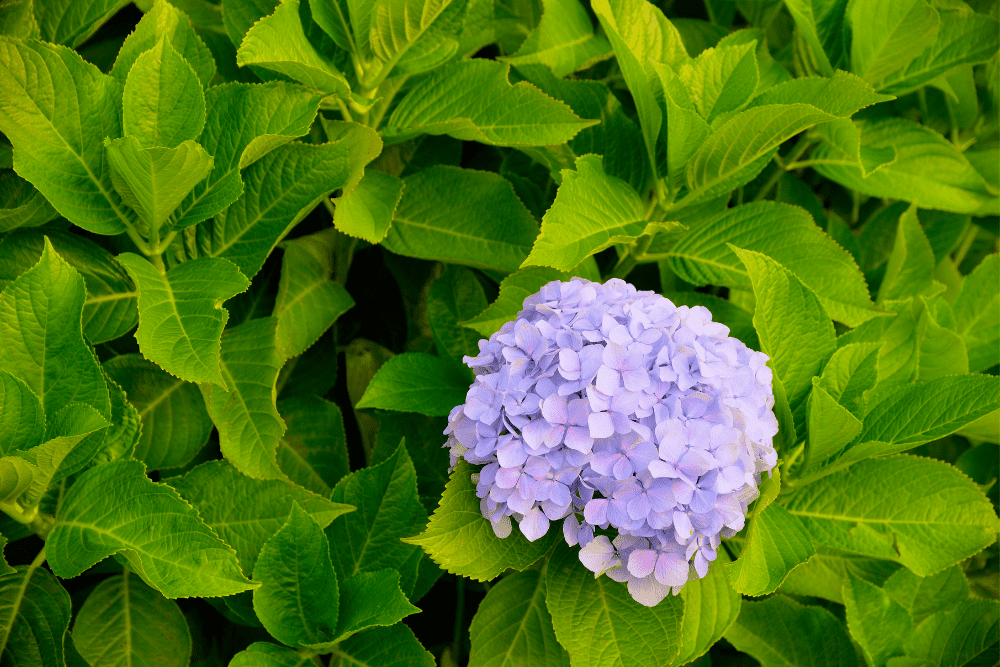
Underwatering your Hydrangea’s
Sometimes, underwatering can be just as harmful as overwatering. The symptoms of both under and overwatering are similar but when you underwater a hydrangea, the inadequate moisture will cause yellowing leaves and wilting, droopy plants.
To avoid underwatering, you need to stick to an organized watering schedule. This means getting someone to water your plants when you are away as if you neglect your plants for over a week, you will begin to see leaf discoloration quite quickly.
You also need to make sure the potting mix is well-draining and you can keep the roots of the plant moist, without drowning it. Do not soak the plant, but ensure you are watering the plant at least once a week.
Iron Deficiency
If your hydrangea leaves turn yellow, but you find the veins remain green, this might be caused by iron chlorosis. Yellow hydrangea leaves are a big indication that your plant is lacking iron.
Iron is a vital nutrient for the plant and is important for the greening of leaves and other parts of the plant. Iron chlorosis is the technical term for the discoloration in plants that is caused by an iron deficiency.
Iron deficiency is characterized by the interveinal chlorosis in hydrangea plants and as we mentioned above, this is when the leaves turn yellow and the veins remain green.
The yellow is seen to be much more noticeable on new leaves which are still growing.
If the new leaves on your plant turn yellow but it still has kept its green veins, this means it is more than likely chlorosis. This disorder occurs when you use hard water to water your plants but can be easily fixed.
All you will need to do is feed the plant with potent iron chelates in the pot.
Under Too Much Light
The leaves may scorch if they are left under too much light. If the leaves of your hydrangea are turning yellow after wilting, this might be your problem.
Yellowing and discoloration from too much light are particularly common if the affected leaves are positioned in a way where they receive direct sunlight.
Hydrangeas are plants that much prefer only partial sun. This means if you expose the plant to full-day sunlight, the leaves will almost definitely begin drooping and turn completely yellow.
Other times, the leaves might start to turn brown and form lots of spots of discoloration. This is also down to the scorching sun.
Nitrogen Deficiency
Unlike an iron deficiency, you might notice older, lower leaves turning yellow instead of newer leaves that are still growing when your plant has a nitrogen deficiency.
You might also notice the entire plant is growing a lot slower than usual.
Luckily, a nitrogen deficiency is simple to fix but to fix it, you need to know why the nutrient is not adequate. If you fertilize your plant with reliable plant fertilizer, your leaves should not be turning yellow.
If this is the case, however, it’s entirely possible nutrients are being flushed out of the post due to too much water and drainage holes that are too big.
Solutions
If you have determined the cause of the yellowing leaves on your hydrangea, it’s time to look at some simple solutions.
After having bought such a beautiful plant, the last thing you want is yellowing leaves to spoil how it looks in your garden looks. It’s not the foliage people are interested in but the blossoms instead and so finding a quick fix should be top of your priorities.
The following methods should help you slow down the yellowing and discoloration.
Provide Only Partial Sunlight
Hydrangeas not only prefer well-draining soil with plenty of moisture in the root zone but they also like the partial sun.
This means, if you find your leaves are turning yellow, simply pop your hydrangea plants where they can benefit from the full beam of the morning sun but stay in the shade throughout the rest of the afternoon.
Your hydrangea plants only need around 3-6 hours of direct morning sunlight. Anything more than this can be the cause of your yellowing leaves.
The scorching midday afternoon sun is particularly dangerous and can quickly cause your plant leaves to droop and lose excessive water. They might also wilt and you will notice the leaves start to curl.
If the problem is the lack of light the hydrangeas are receiving or the fact your plants are subject to excessive lighting, you should instead place it where they will receive adequate afternoon sunlight.
UV radiation however is harmful to the plant when it receives sunlight for around 11-15 hours.
Where you place your hydrangea is incredibly important. The plant needs to receive around 6 hours of the afternoon sun and if it exceeds this time, the plant could even suffer from sunburn.
On the other hand, hydrangea plants do not grow and become healthy in dark environments either. It will struggle to grow at all if it is constantly overshadowed by other taller plants or any other big shrub.
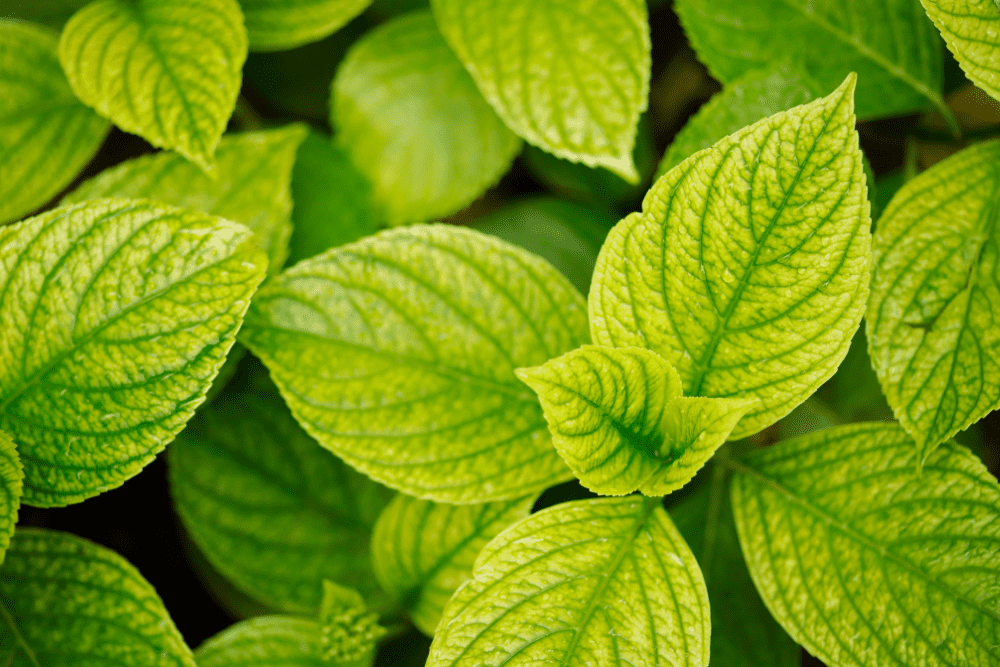
Ensure Your Soil Has Moisture
If it is overwatering or underwatering that is causing the leaves to turn yellow, you need to ensure you are maintaining the proper moisture level in the soil.
If it is underwatering yellowing the leaves, your soil will be dry and this will cause the leaves to fall off. In his case, you should avoid letting the soil dry out completely but keep watering your plant at least once every week.
You need to be careful you are not wetting the soil too much or making it soggy and mulching is also recommended to retain lost moisture.
If the soil is too wet, you might have to resort to repotting the plant to fix the waterlogging problem that is causing leaf discoloration and other fungal diseases.
If the problem with yellowing leaves is that you are overwatering the plant, you need to stick to a dedicated watering schedule and should minimize how often you are watering the plant.
You could even stop watering the plant completely if you have planted the hydrangea in a place where the hydrangea is constantly wet.
To prevent the plant from being water-logged, you can also use a drainage layer that is made of stone or broken bricks.
This should be placed at the bottom of the pot and the layers should be placed down before planting or when transplanting.
Fix the pH of the Soil
If the problem is that your soil has low acidity, this will turn your leaves yellow in no time. The recommended pH for growing hydrangeas is 5.5-6.5 and if you use soil that is not at this pH level, you could encounter problems.
Soil that is not acidic enough can be corrected easily. You can correct the pH by watering it with a solution made up of citric acid and water.
Feed Hydrangea Plants with Iron Supplements
Before doing this, you need to work out if iron deficiency is what is causing the chlorosis of the plant. If this is the case, you should use iron supplements such as iron chelates.
When feeding the plant these supplements, you should make sure you are also not overwatering the plant either.
Overwatering hydrangeas that are being supplemented with their iron, will flush it right back out with other vital nutrients and will only leave inadequate nutrients in the pot which will not be sufficient enough to feed the hydrangeas so that they can grow and be healthy.
Use Mineral Fertilizers with your Iron Supplements
If your problem with yellow leaves has developed because of a lack of nutrients, you need to fertilize the soil in which your plants are growing in. To do this, add mineral fertilizers to the soil, and don’t forget one important step: adding manure during the planting process.
You should be using a fertilizer that is rich in iron such as Milorganite and this should work well to get rid of iron chlorosis and any other signs of nitrogen deficiency.
If you do not need to fix a nitrogen deficiency, however, you can use any other iron supplement to reverse the iron deficiency.
Cutting Yellow Leaves
Once you have worked your way through the solutions and solved the problem with the yellow leaves on your hydrangea, you should cut existing yellow leaves off.
This is because they are full of dead cells and will not benefit your plant’s growth. It will also ruin the overall appearence of your plant if you leave them on. Use scissors or pruning shears to snip away and never ignore preventative measures again.
Saving an Overwatered Hydrangea
As we have discussed in this article, overwatering your hydrangeas can lead to unhealthy plants and yellowing leaves. The following steps can be taken to save a hydrangea that has been overwatered.
Repot the Plant
This will help you determine how badly the roots have been damaged. Shake off and get rid of excess soil to expose the roots and snip the rotted roots before replanting in fresh soil.
Relocation
Relocating the hydrangea can prevent wilting caused by direct sunlight.
Remove Damaged Leaves
The yellowing on the leaves means the leaf is filled with dead cells. In this case, you should remove them completely by cutting them off.
Treat Soil with Fungicide
Treating the soil with fungicide is advised as molds can develop in wet environments.
Falling Leaves
If you find your leaves have started to fall off, this is not a reason to panic and it can be fixed easily.
Both yellowing leaves and falling leaves usually have similar underlying causes and this means they have similar solutions. Simply follow the solutions we have outlined above to fix leaves that are falling from the plant.
Final Thoughts
Taking care of your hydrangea allows you to keep your plant beautiful and healthy and avoid those yellow leaves from developing. If you do find yourself with yellow leaves, identify the problem and use one of our solutions to fix it.
Once you have done this, snip off those yellow leaves full of dead cells and focus on keeping your plant hydrated and giving it enough sunlight, and you should not experience the issue again.

